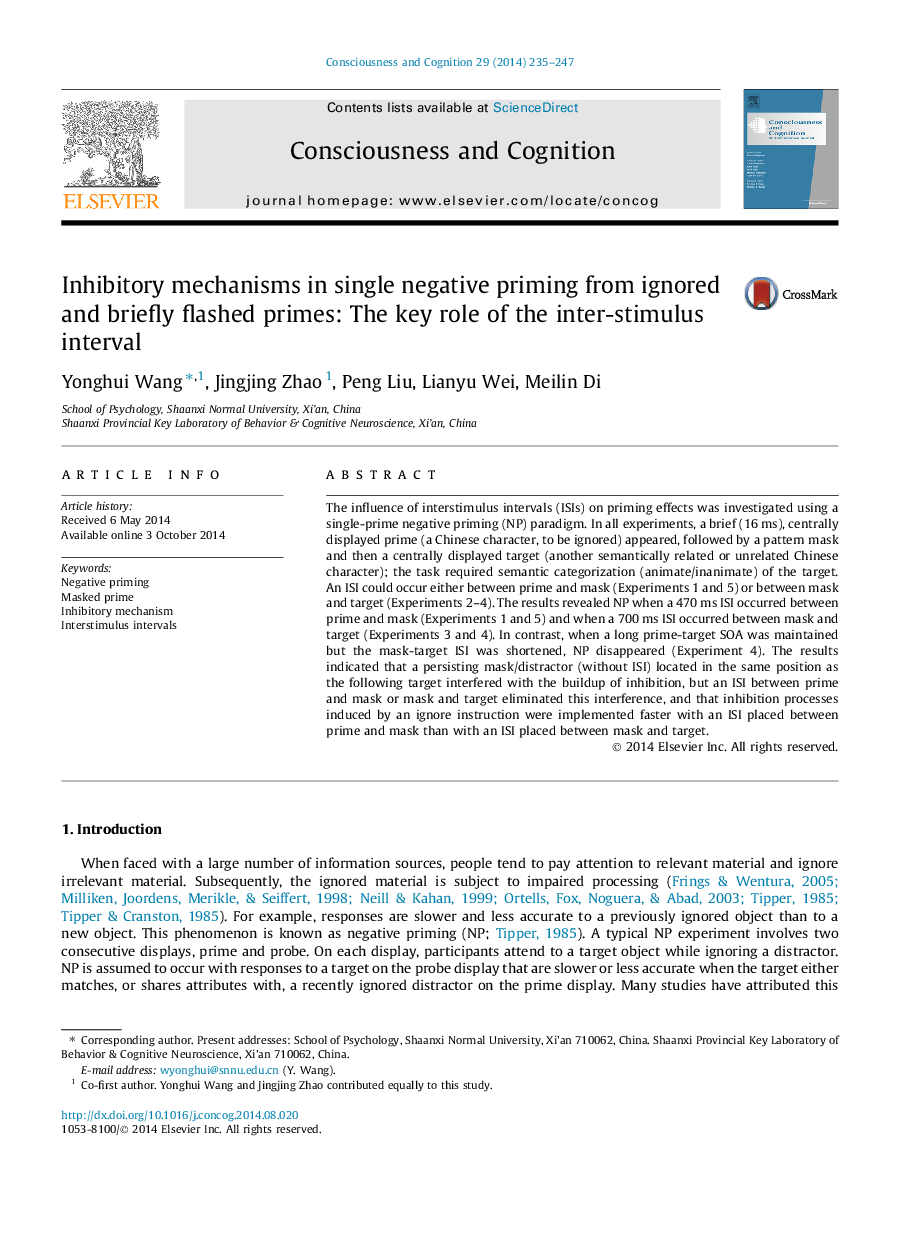| Article ID | Journal | Published Year | Pages | File Type |
|---|---|---|---|---|
| 7289893 | Consciousness and Cognition | 2014 | 13 Pages |
Abstract
The influence of interstimulus intervals (ISIs) on priming effects was investigated using a single-prime negative priming (NP) paradigm. In all experiments, a brief (16Â ms), centrally displayed prime (a Chinese character, to be ignored) appeared, followed by a pattern mask and then a centrally displayed target (another semantically related or unrelated Chinese character); the task required semantic categorization (animate/inanimate) of the target. An ISI could occur either between prime and mask (Experiments 1 and 5) or between mask and target (Experiments 2-4). The results revealed NP when a 470Â ms ISI occurred between prime and mask (Experiments 1 and 5) and when a 700Â ms ISI occurred between mask and target (Experiments 3 and 4). In contrast, when a long prime-target SOA was maintained but the mask-target ISI was shortened, NP disappeared (Experiment 4). The results indicated that a persisting mask/distractor (without ISI) located in the same position as the following target interfered with the buildup of inhibition, but an ISI between prime and mask or mask and target eliminated this interference, and that inhibition processes induced by an ignore instruction were implemented faster with an ISI placed between prime and mask than with an ISI placed between mask and target.
Keywords
Related Topics
Life Sciences
Neuroscience
Cognitive Neuroscience
Authors
Yonghui Wang, Jingjing Zhao, Peng Liu, Lianyu Wei, Meilin Di,
